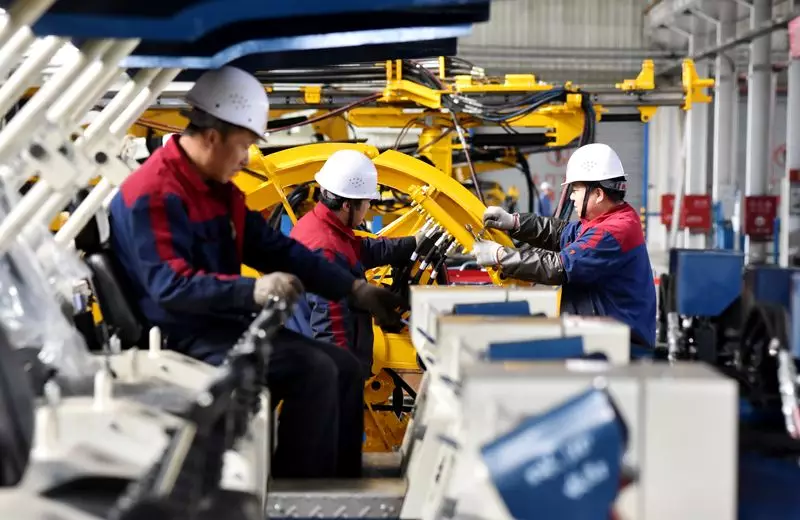November 2023 brings a moment of cautious optimism for China’s industrial sector, with recent data from the National Bureau of Statistics revealing a modest increase in industrial output growth. Year-on-year, production rose by 5.4%, slightly outperforming October’s recorded growth of 5.3%. This uptick, though marginal, signifies resilience in an economy struggling against a backdrop of external pressures and internal consumption challenges. The increase was also favorable against forecasts that predicted a stagnated growth rate of 5.3%, indicating that certain segments of Chinese manufacturing continue to find their footing amidst tumultuous global markets.
However, while industrial performance displays signs of vigor, this positive development is juxtaposed with disappointing figures from the retail sales sector. Highlighting a distinct dichotomy in China’s economic performance, retail sales growth fell to just 3.3% in November, a substantial drop from the previous month’s increase of 4.8% and significantly lagging behind analysts’ predictions of 4.6%. This discrepancy emerges despite governmental pushes to stimulate consumer spending through various initiatives, including online shopping events and trade-in subsidies designed to reinvigorate sectors like the automotive industry.
The mixed signals from industrial and retail statistics reflect the complexities of China’s economic landscape as it approaches 2025, a period that may witness intensified trade hostilities with the United States. Analysts believe that a looming second Trump administration could exacerbate the already precarious trade relationship, ushering in higher tariffs that could stifle Chinese exports further. This potential scenario places immense pressure on Beijing to bolster domestic consumption as a counterbalance to external vulnerabilities, especially as confidence among consumers remains tepid.
In light of these pressing concerns, Chinese leadership has committed to measures aimed at invigorating domestic demand. During the Central Economic Work Conference, leaders outlined intentions to escalate the budget deficit and introduce additional debt instruments as part of a broader strategy to increase consumer confidence. This commitment aligns with the findings of a recent Politburo meeting advocating an “appropriately loose” monetary policy, marking a pivot after 14 years of stringent monetary controls.
Despite these initiatives, the overall growth in fixed asset investment presents an additional challenge. The investment pace has slowed to a mere 3.3% during the first eleven months of the year, slightly below expectations and down from earlier projections of 3.4%. This stagnation in capital expenditures underscores the hesitancy among investors who are wary of the enduring effects of China’s enduring real estate crisis. Presently, it is estimated that approximately 70% of household savings are tied up in real estate—an industry that has historically served as a pillar for economic stability.
While there are glimmers of hope—new home prices in November declined at the slowest rate in 17 months—most analysts remain cautious about the construction sector’s recovery trajectory. The government’s recent strategies, including reduced mortgage rates and enhanced tax incentives to stimulate home purchases, indicate a concerted effort to rejuvenate consumer confidence in real estate. However, whether these initiatives can catalyze a genuine turnaround remains uncertain.
Future Outlook: Navigating Potential Challenges
As China positions itself for the subsequent year, the growth target remains a focal point of discussion among policymakers, with recommendations to aim for approximately 5.0% growth in 2024. Contingent forecasts suggest that impending U.S. tariffs—projected to rise significantly—could illicit up to a 1% decrease in growth. The yin and yang of these economic dynamics compel officials to consider nuanced strategies, potentially allowing the yuan to weaken should trade tensions escalate further, even as commitments to maintain currency stability persist.
The landscape of China’s economy is a precarious interplay of growth, stabilization measures, and external pressures. Policymakers must navigate these waters with diligence, seeking not only to safeguard existing economic patterns but to innovate and adapt in the face of adversity. The coming months will be critical as China seeks to balance its need for robust industrial output against the realities of consumer confidence and international trade challenges.

